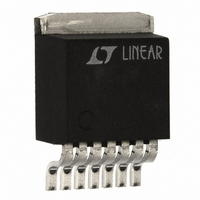LT1513CR Linear Technology, LT1513CR Datasheet - Page 7

LT1513CR
Manufacturer Part Number
LT1513CR
Description
IC BATT CHRGR CONST/PROG I/V 7DD
Manufacturer
Linear Technology
Datasheet
1.LT1513-2CR.pdf
(16 pages)
Specifications of LT1513CR
Function
Charge Management
Battery Type
All Battery Types
Voltage - Supply
2.7 V ~ 25 V
Operating Temperature
0°C ~ 125°C
Mounting Type
Surface Mount
Package / Case
TO-263-8, D²Pak (7 leads + Tab), TO-263CA
Lead Free Status / RoHS Status
Contains lead / RoHS non-compliant
Available stocks
Company
Part Number
Manufacturer
Quantity
Price
Company:
Part Number:
LT1513CR
Manufacturer:
LT
Quantity:
5 510
Part Number:
LT1513CR
Manufacturer:
LT/凌特
Quantity:
20 000
Company:
Part Number:
LT1513CR#PBF
Manufacturer:
MCSM
Quantity:
7 031
Part Number:
LT1513CR#PBF
Manufacturer:
LINEAR/凌特
Quantity:
20 000
Part Number:
LT1513CR#TRPBF
Manufacturer:
LINEAR/凌特
Quantity:
20 000
APPLICATIONS
The LT1513 is an IC battery charger chip specifically opti-
mized to use the SEPIC converter topology. A complete
charger schematic is shown in Figure 1. The SEPIC topology
has unique advantages for battery charging. It will operate
with input voltages above, equal to or below the battery
voltage, has no path for battery discharge when turned off,
and eliminates the snubber losses of flyback designs. It also
has a current sense point that is ground referred and need
not be connected directly to the battery. The two inductors
shown are actually just two identical windings on one
inductor core, although two separate inductors can be used.
A current sense voltage is generated with respect to ground
across R3 in Figure 1. The average current through R3 is
always identical to the current delivered to the battery. The
LT1513 current limit loop will servo the voltage across R3
to – 100mV when the battery voltage is below the voltage
limit set by the output divider R1/R2. Constant-current
charging is therefore set at 100mV/R3. R4 and C4 filter the
current signal to deliver a smooth feedback voltage to the I
pin. R1 and R2 form a divider for battery voltage sensing and
set the battery float voltage. The suggested value for R2 is
12.4k. R1 is calculated from:
A value of 12.4k for R2 sets divider current at 100 A. This is
a constant drain on the battery when power to the charger is
off. If this drain is too high, R2 can be increased to 41.2k,
reducing divider current to 30 A. This introduces an addi-
tional uncorrectable error to the constant voltage float mode
of about 0.5% as calculated by:
nominal 0.3 A typical value.
With R2 = 41.2k and R1 = 228k, (V
to variations in bias current would be 0.42%.
A second option is to disconnect the divider when charger
power is off. This can be done with a small NFET as shown in
0.15 A = expected variation in FB bias current around the
V
0.3 A = typical FB pin bias current
R
V
BAT
BAT
1
= battery float voltage
1 245
Error =
R V
.
2
(
BAT
R
– .
2 0 3
0.15 A(R1)(R2)
1.245(R1+ R2)
U
( .
1 245
INFORMATION
A
U
)
)
BAT
W
= 8.2V), the error due
U
FB
Figure 3. D2, C6 and R6 form a peak detector to drive the gate
of the FET to about the same as the battery voltage. If power
is turned off, the gate will drop to 0V and the only drain on the
battery will be the reverse leakage of the catch diode D1. See
Diode Selection for a discussion of diode leakage.
ADAPTER
Maximum Input Voltage
Maximum input voltage for the LT1513 is partly determined
by battery voltage. A SEPIC converter has a maximum
switch voltage equal to input voltage plus output voltage.
The LT1513 has a maximum input voltage of 30V and a
maximum switch voltage of 40V, so this limits maximum
input voltage to 30V, or 40V – V
Shutdown and Synchronization
The dual function S/S pin provides easy shutdown and
synchronization. It is logic level compatible and can be
pulled high or left floating for normal operation. A logic low
on the S/S pin activates shutdown, reducing input supply
current to 12 A. To synchronize switching, drive the S/S pin
between 600kHz and 800kHz.
Inductor Selection
L1A and L1B are normally just two identical windings on one
core, although two separate inductors can be used. A typical
value is 10 H, which gives about 0.5A peak-to-peak induc-
tor current. Lower values will give higher ripple current,
which reduces maximum charging current. 5 H can be used
if charging currents are at least 20% lower than the values
INPUT
LT1513
GND
V
Figure 3. Eliminating Divider Current
IN
SCHEMATIC SIMPLIFIED FOR CLARITY
D2 = 1N914, 1N4148 OR EQUIVALENT
V
L1A
V
SW
FB
C2
LT1513/LT1513-2
R3
L1B
BAT
, whichever is less.
D2
C6
470pF
D1
R6
470k
R1
R2
sn1513 1513fas
+
C1
1513 F03
7

















